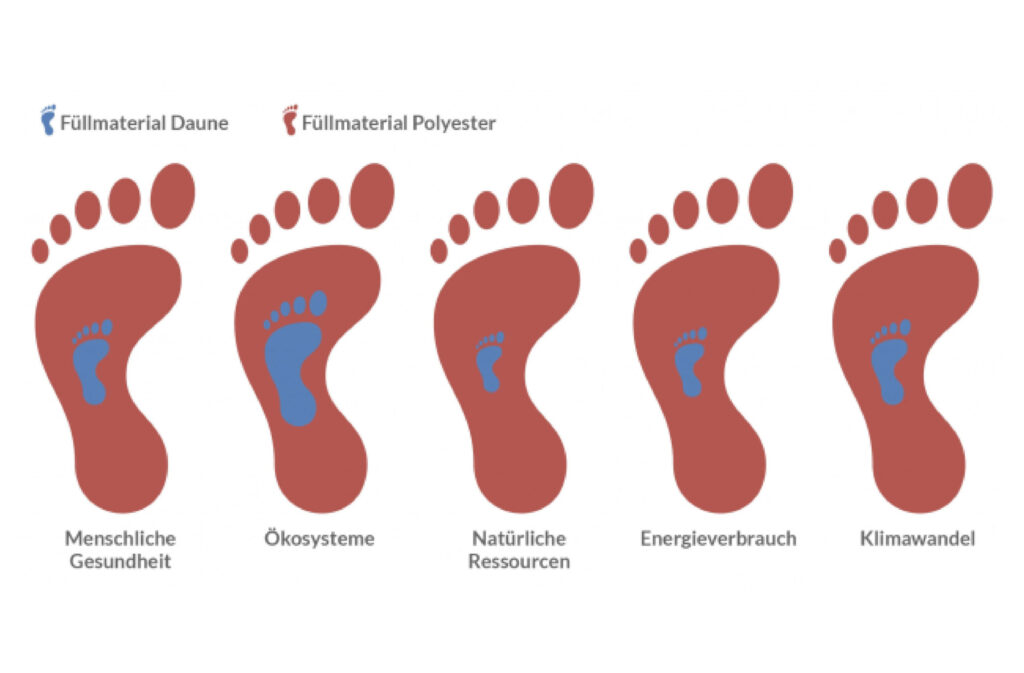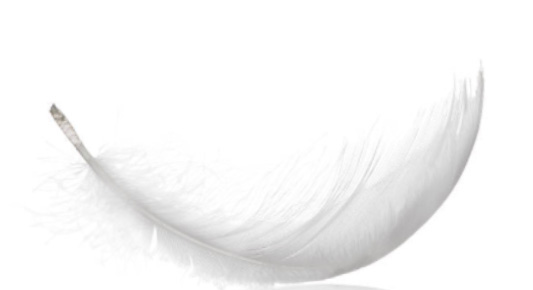Sustainability and recycling
Why are down duvets and feather pillows so long-lasting compared to synthetic bedding? How can old bedding be disposed of and what happens to it?
Sustainability is an increasingly important issue when it comes to bedding too. Consumers want duvets and pillows that have as little impact as possible on our environment. But how sustainable and ecological are down duvets and feather pillows?
The answer to this question is provided in a study by the independent organisation Long Trail Sustainability, which compared the life cycle of down and synthetic (polyester) fillings. The result is clear: Down products are up to 33 times more sustainable than synthetic ones.
How sustainable and ecological are down duvets?
The study took a close look at the raw materials used and the production process for the fillings. It then examined their effect on various sustainability factors:
- Climate change
- Natural resources
- Ecosystems
- Human health
- Energy consumption
The result: The environmental impact, the so-called ecological footprint, caused by down is 85% to 97% lower than that caused by synthetically produced filling material.
What makes down duvets sustainable?
The study leaves no room for doubt: People who attach importance to eco-friendly and green materials choose down duvets. But what makes down products so sustainable?
The answer is simple: Down and feathers are natural materials occurring as a bi-product of meat product. Pre-existing raw materials are thus re-purposed.
This is not only sustainable, but also animal-friendly. Indeed, the member of the Swiss Bedding Manufacturers' Association committed years ago to refrain from using down and feathers from live plucking. In addition, down duvets and feather pillows can be disposed of ecologically.
Down duvets and recycling
As seen above, down is, strictly speaking, already a recycled raw material. But how do I dispose of discarded down duvets or feather pillows properly and what happens to them afterwards?
In contrast to synthetic or natural hair bedding, down duvets and feather pillows can be put in a clean plastic bag and placed in most standard collection containers or left outside on the next collection day for recycling. The filling is then hygienically processed and re-purposed, for example, for use in winter jackets or sleeping bags.
Down and feathers which are no longer suitable for reuse are composted. As a natural product, they are biodegradable. Although recycled down for bedding is justified, it does not achieve the same quality standard. In addition, there is not sufficient suitable recycled material available.


